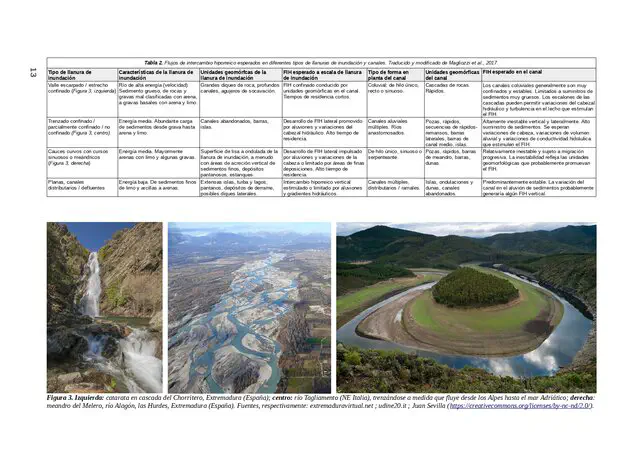
Abstract
In most river systems, surface water is connected to the groundwater stream through the riverbed sediments. This saturated transition zone, in which there is a bidirectional exchange of matter and energy, is called the hyporheic zone or hyporheic ecotone. The hyporheic ecotone is strongly influenced by spatio-temporal variations. We examine the hydrological and geomorphological factors that affect the hyporheic exchange flows, from the catchment scale to the river reach scale. The textural characteristics of the sediment, as well as the magnitude and direction of these changes, especially exhibited in the upwelling and downwelling zones, are key in the distribution of the hiporheic fauna. This fauna has been shown to play a crucial role in maintaining the necessary ecosystem functions to guarantee water quality and protect water against pollution and degradation caused directly and indirectly by anthropic effects. The study of these aspects are directly linked to the objectives of the Water Framework Directive, which is why the specific inclusion of hyporheic ecotones in the legislative field has been proposed.